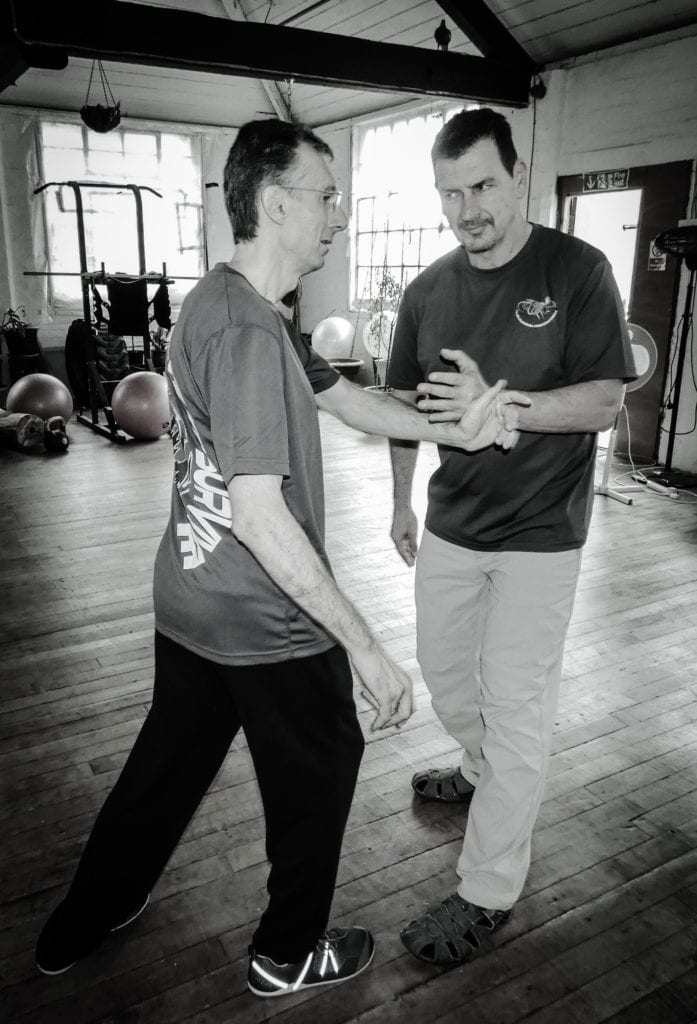
Tai chi ( short for T’ai chi ch’üan or Tàijí quán ) is one of the most useful movement therapies in the management of lower limb injuries. When you suffer an ankle, hip or knee injury the nervous system is involved and you need an exercise that helps the muscles, tendons, ligaments as well as the nervous system.We use Tai chi exercises extensively in the early stages of recovery to give the nervous system time to heal.
Common conditions that may benefit from Tai Chi exercises
- Ankle sprains and instability
- Knee pain
- injury rehabilitation
- Patellofemoral pain syndrome
- Osteoarthritis
- Hip pain
- Tendinitis
- Muscle or tendon strain
- Osteoarthritis
- Pelvic instability
- Balance (Falls prevention)
How to fit all your exercises in a busy day
Everyone struggles with exercises that are given to them by their therapist. If you are given too many new exercises you get confused or overwhelmed. You feel bad that you haven’t done them as much as you should and you may even cancel your next appointment for fear of getting in trouble.You want to get better but you just don’t know how to fit everything in your day.
Our Tai chi therapy solves a lot of your worries about how to fit more exercise into a busy day. We give you short simple Tai chi exercises that are easy to remember. We build on these exercises by starting simple and increasing the difficulty as you progress. Same exercise… just made a little more complex as you grow stronger. The bonus being that many of these exercises have the advantage of replacing multiple “normal” exercises.
Tai chi exercise habits
We believe if your podiatrist gives you an exercise program they should also teach you how to fit it into your busy life. Based on current research in behaviour design we have developed our exercise habit tool to make fitting exercise into an already busy life a little easier for when your motivation fades. This tool is based around adding (anchoring) your new exercise around a simple habit that you already do…like putting the kettle on.
We have found that curiosity and motivation seem to go hand in hand when it comes to a successful exercise program. People are very curious when we offer to design them an exercise program based on Tai chi movements and we love seeing them have fun with a little bit of Tai chi.
Tai chi for balance after ankle and knee injuries
Our sense of balance is often reduced after ankle and knee injuries no matter what our age. Slowing down a movement is when we challenge our sense of balance in a safe way. This is when the nervous system has time to reassess and repair. Tai chi has a very controlled pace that allows the neurological system to take note of where your body is positioned and where the loads are placed upon joints, muscles, tendons and ligaments.
Changing direction in sport is when many injuries occur and you need to work at regaining this ability after injury with very controlled movements and postures. The ability to safely change direction is challenged in your Tai chi exercises whilst giving your nervous system time to reeducate and learn. Once you have safely improved your balance and directional change you need to increase the pace if you want to return to sport.
Tai chi is not all slow
As you recover from an injury or weakness there comes a time when things need to speed up. Contrary to popular belief Tai chi is not all slow and made for old people. Our Tai chi instructor / Podiatrist Colin Power has been trained in the “Old ways” of Tai chi when Tai chi had both slow and explosive (plyometric) movements.
We use Tai chi exercises from the old training methods used in the martial art of Tai chi when you are ready for explosive (plyometric) movements. You are still doing therapy…just with the flavour of Tai chi to make it more memorable.
We have a vast system of exercises to safely build strength and get you back to the sport of your choice. Many of these Tai chi exercises have been extensively researched for health benefits and we offer them to make your exercises more enjoyable than most prescription exercises.
Who knows it may even spark your interest in learning more about the art of Tai chi.
